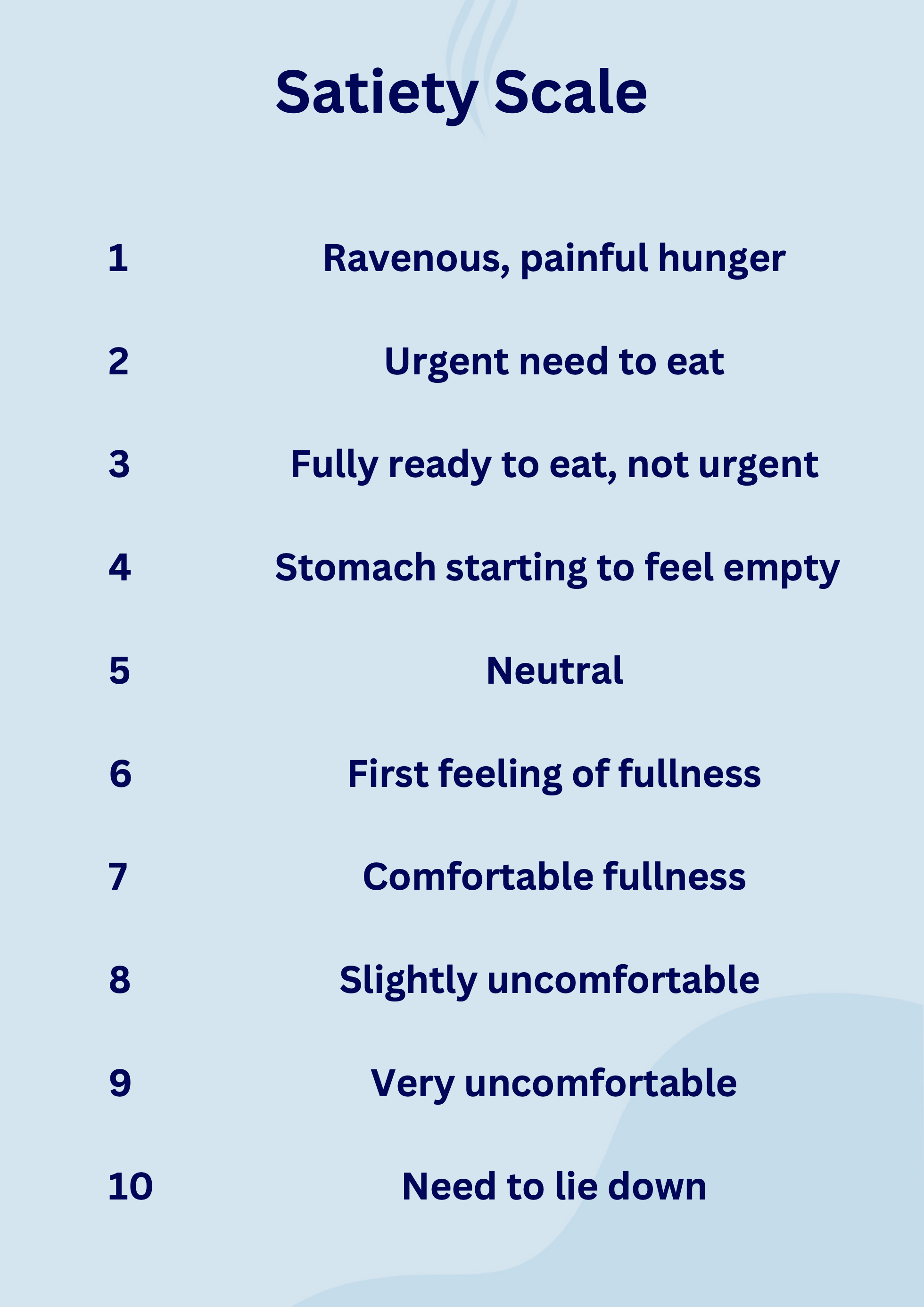Finding Yourself on the Satiety Spectrum
Today’s Post by Kelsey Chadwick, MS RDN
May 3rd, 2023
Now that we have talked about hunger, it’s time to dive a little bit deeper into understanding fullness, or satiety. If you haven’t read my latest post on hunger, you can find it here. Learning hunger in your own body takes time and lots of practice. In this post I am going to talk about a few tools that can help you begin to navigate hunger and fullness in your own body.
First off, I want you to know that hunger and fullness are most likely going to look different each day. There are a variety of factors that go into how hungry you are and how full you may be. These can be things like sleep, physical activity, sickness, stress, hormonal changes and menstrual cycle.
The first step is to check in with your hunger and fullness cues. Now this may be challenging at first, as our bodies can stop sending us these signals if we have ignored them during years of dieting. The first step in getting these cues back is to adequately nourish your body throughout the day. This means having a meal or snack every 3-4 hours or so. Even if your body might not be sending you these cues, it’s important to still check in every 3-4 hours before eating this meal or snack. This can help determine different levels of hunger. Additionally, checking in throughout a meal or snack is equally important in determining satiety, as well as at the end of a meal.
A helpful tool in assessing these different levels of hunger and fullness is the satiety scale, also called the hunger and fullness scale. It looks like this:
The natural, comfortable eating range is between 3-7. Uncomfortable hunger is below a 3 on the scale and uncomfortable fullness begins as we approach 8 on the scale.
If these numbers cause any stress or seem overwhelming, another way to approach hunger and fullness is by simply asking yourself if you are experiencing uncomfortable/comfortable hunger and comfortable/uncomfortable fullness. But if you feel the satiety scale is helpful, the next time you feel a hunger cue, take a look at the scale and see which number best describes it. Not only can this be used before, during, and after eating, but as you begin to reconnect with your body, it can be a great tool to use as a check in throughout the day.
Learning to feel fullness in your body is essentially a mindfulness practice. It can be quite awkward and foreign at first, but trust me it gets easier!
Currently, you may find yourself scarfing down your food between meetings or classes and aren’t truly present during your eating experiences. This is a huge disconnect with our body and it becomes very easy to pass comfortable fullness.
This is where the pause comes in - a pause in the middle of eating your meal or snack. This pause can be done as many times as you feel necessary, even before the middle of eating, but at first one pause in the middle of eating can be eye opening to see just how full you are or how fast you may be eating. Use the satiety scale to help determine your level of fullness. It can be helpful to pause again after you have finished eating to determine if you have reached that level of uncomfortable fullness.
Keep in mind that in order to be present during eating and begin to connect with these cues, it’s a good idea to have minimal distractions. Now, I know this is not always possible, but it does help us be more present during the eating experience.
To help you start learning more about fullness in your own body. Explore these questions below.
After a meal am I consistently between 8-10 on the satiety scale? Do I experience this with all meals and snacks or only certain foods?
How does fullness feel in my body?
What does comfortable fullness feel like?
Are there certain foods that keep me more full than others?
How does fullness feel overall - does it feel pleasant, unpleasant or neutral? If it feels unpleasant, what can I do differently?


